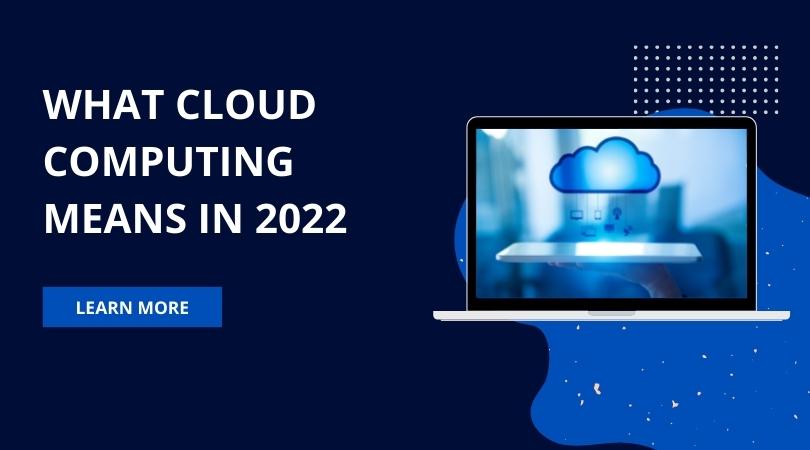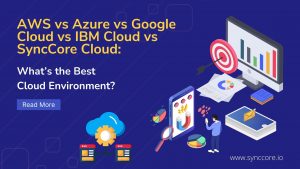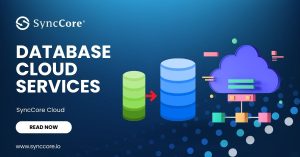Table of Contents
What Cloud Computing Means in 2022
The pressure to accelerate enterprise-wide cloud adoption to fuel digital transformation or risk falling behind the competition is causing cloud adoption to accelerate to new heights.
In the last two years, pandemic-induced disruptions have compelled CIOs to overcome any aversion to moving mission-critical workloads to the cloud.
Gartner predicts that global public cloud services end-user spending will reach $482 billion in 2022. Although most organizations today have some cloud presence, having adopted cloud in one form or another, not everyone can fully capitalize on the vast opportunities the cloud provides – because they are not fully aware of the latest trends and cannot keep up with evolving innovations.

Cloud Computing in 2022
Suppose you want to start and maintain a cloud deployment to build disruptive business models and revolutionize the overall customer experience. In that case, you must align the latest cloud capabilities with your specific business needs and requirements.
Let’s take a look at what cloud computing means in 2022 and what capabilities will drive increased cloud spending in the coming year:

Desktop-as-a-Service:
The pandemic has necessitated a comprehensive rethinking of cloud strategies, with collaboration and mobility capabilities increasingly migrating to the cloud to enable the Future of Work. With employees continuing to work remotely using various devices, cloud computing will include more than just remote desktops and applications in 2022; Desktop-as-a-Service (DaaS) will be increasingly used to set up secure remote workplaces for organizations and empower a distributed workforce.
DaaS will enable organizations to lower capital expenditures while minimizing and reducing attack vectors by regularly monitoring every device attempting to connect to corporate networks by providing a secure and scalable solution to deploy, monitor, and manage end-user devices.
Containerization:
Cloud containerization will assist organizations in overcoming the problem of sluggish and error-prone pipelines as they look to build new applications and refactor existing ones to keep up with the pace of disruptive change. Developers will not only use the Cloud to build traditional applications in 2022, but they will also increasingly use containers to make their app infrastructure more agile, allowing software to run more reliably – especially when moving from one computing environment to another.
Organizations will eliminate issues caused by differences in operating system distributions while integrating new features and changes more quickly by packaging applications and dependencies into portable containers.
Multi-cloud:
Although many organizations continue to advocate for ‘one-stop-shop’ cloud services, relying on just one cloud provider to meet all of their computing needs, businesses will increasingly adopt multi-cloud strategies to run their operations in 2022. Instead of putting all of their eggs in one basket, organizations will cherry-pick cloud resources and services from various providers to better meet their business needs – without succumbing to the burden of vendor lock-in.
Multi-cloud will enable organizations to take advantage of economies of scale and achieve greater efficiencies by adopting best-in-class services at competitive prices by utilizing a combination of private, public, and hybrid cloud services.
Edge computing:
The number of Internet of Things (IoT) devices connecting to enterprise infrastructure is increasing. By 2029, it is expected to reach 15 billion! Hyperscale cloud providers are increasingly focusing on bringing cloud capabilities closer to the edge. Edge computing will enable organizations to analyze data collected by these edge devices and make business-critical decisions in real-time by 2022. Edge computing will help process growing data and better business resilience by addressing lower latency issues. Edge computing will also aid in quickly segmenting and isolating vulnerable devices, reducing the time it takes to detect breaches and protecting the enterprise from attacks.
Carbon-intelligent clouds:
Climate change mitigation continues to be a growing concern for CIOs worldwide, which is why the adoption of carbon-intelligent clouds will be widespread in the coming year. Organizations will focus on their ESG goals and more easily support green initiatives, reduce their carbon footprint, and build a sustainable future by implementing carbon-intelligent clouds. These clouds will move workloads from one data center to another based on renewable energy availability, resulting in the lowest possible CO2 emissions while constantly optimizing energy usage.
Cloud-based applications that enable agility and resilience will completely change the business landscape as organizations seek to revamp their business models in response to the ongoing crisis. DaaS, containerization, multi-cloud, edge computing, and carbon-intelligent clouds will become commonplace by 2022, bolstering the continuing shift to the Cloud. Cloud will enable organizations to address complex and emerging use cases and magnify their digital transformation efforts in the coming year by serving as a bridge between different technologies that CIOs want to leverage.



